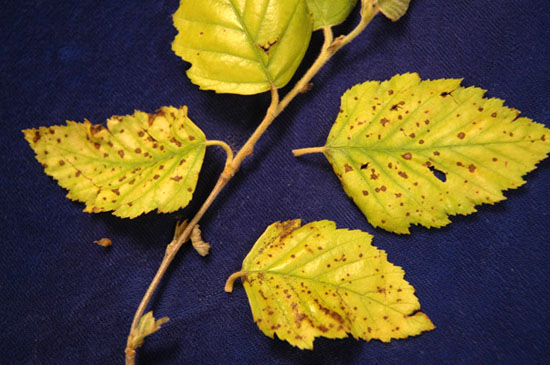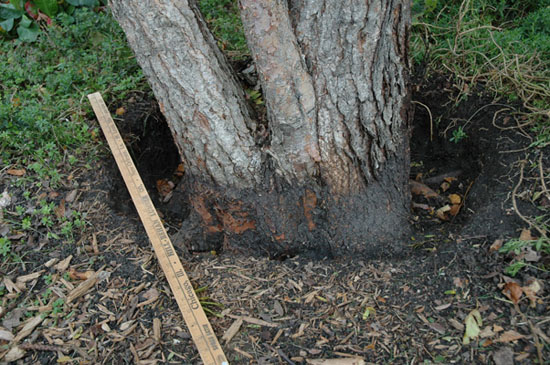Issue 4, May 14, 2010
Birch Anthracnose, Chlorosis, and More
Anthracnose is a common spring disease, especially in cool, wet conditions. Since those conditions occur in Illinois every year, we see anthracnose every year. There are many fungi that cause anthracnose diseases on many hosts. It is not just one big, powerful pathogen. The common thread is the weather requirement, infection of lush new growth, and formation of fruiting bodies called acervuli. Anthracnose is common on ash, oak, maple, sycamore, and many other shade tree species. It is relatively common as well on birch. The image shows a river birch infected with anthracnose. These spots could be caused by other leaf infecting fungi, including Septoria, Cylindrosporium, Discula, and Marssonina. In most cases there is no need to spray trees to combat these leaf spots. One exception is young nursery trees that may warrant sprays to help maintain foliage in production.

You have undoubtedly noticed that the leaves in the photo are chlorotic, a much bigger problem on this birch. Chlorosis is often caused by the lack of iron or manganese which can be tied up in alkaline soil conditions. This tree has been treated for chlorosis using noninvasive methods of soil applied acidic fertilizers. Trunk injections may be used if the condition worsens. A slight improvement has been noted in recent years.
The major problem on this tree, however, is neither of the above, normally diagnosed problems. A root collar excavation revealed that the tree was planted about 8" too deeply (see image). Although anthracnose and chlorosis can be treated, the tree will most likely slowly decline because of below ground problems. When you have a similar situation, where everything you do seems to no avail, look below the soil for a possible explanation.

--Nancy Pataky